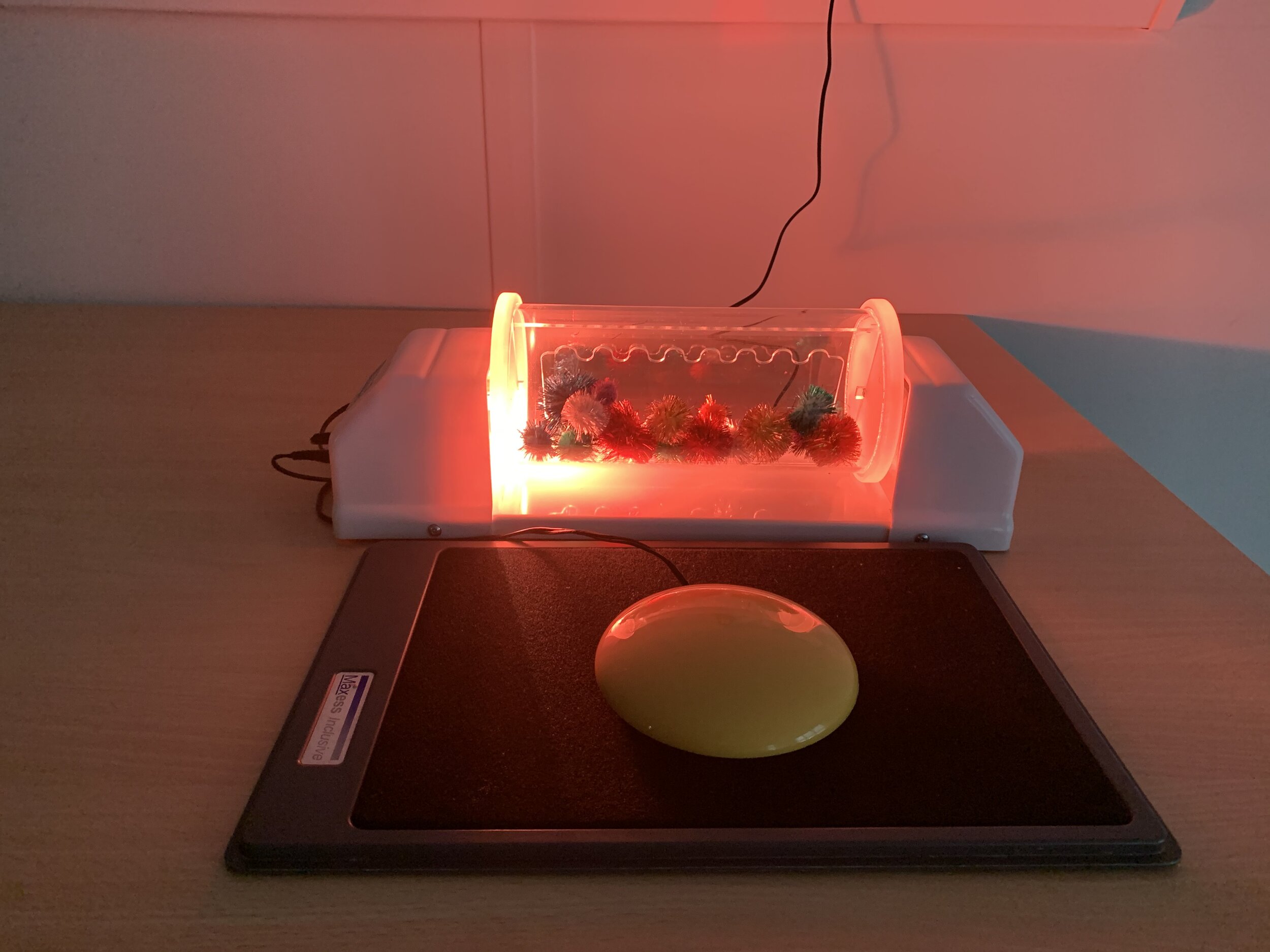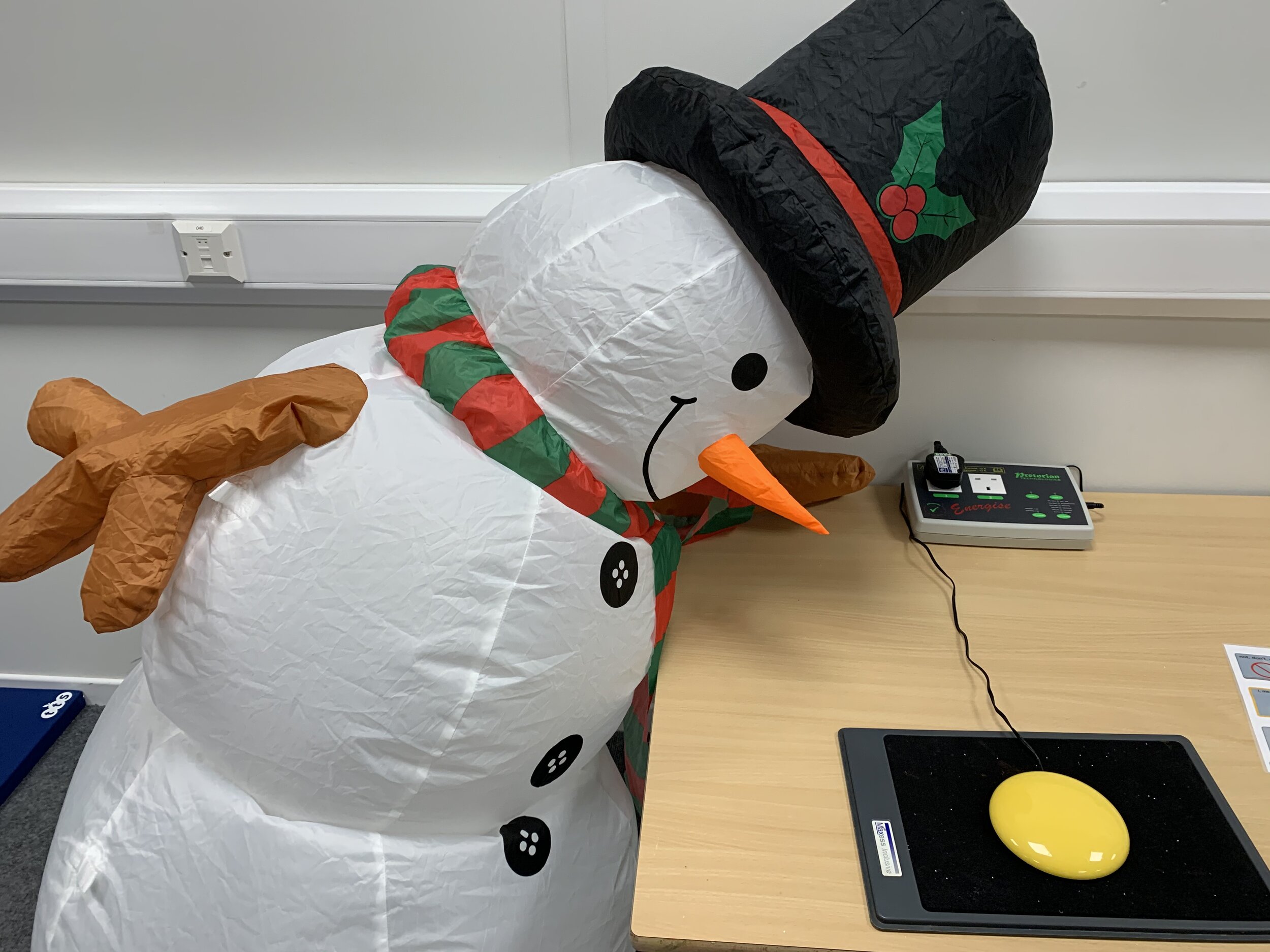Switch-Accessible Play Activities
Learning Through Play for Pupils with Complex Needs
In The Springboard Curriculum we recommend that the same Carousel Play activities are set up every day for a week and that pupils access them for one session each day as part of other broad and balanced learning opportunities. This enables pupils to become familiar with the resources, return to activities they have enjoyed and empowers educators to progress learning during the week by making adaptations for individual pupils.
In our earlier post on carousel play, we suggest including a switch-accessible activity each week as one of the activities on offer. Switch accessible activities offer resources which produce highly motivating effects such as light, sound and vibrations. We link these activities to our topic to ensure that pupils have access to a range of different interesting experiences. Consider setting up a permanent space in your classroom such as a tent or arch which can be turned into a dark area. This allows a light-up switch activity to be available whenever you would like to offer one as an integral part of carousel play.
Developing access to ICT for pupils with severe and complex needs is beneficial as this teaches the pre-requisite skills many will require to enable long term access to high tech communication, powered mobility and/or the ability to record their work. For young children, we start to develop these skills as soon as they start school through highly motivating switch-accessible play activities. All activities are supported with communication symbols and boards to enable staff and pupils to talk about the activity and create communication opportunities.
Switch Access
Children with physical disabilities may require access to a specialised switch set-up to enable effective access. The Occupational Therapist may be able to offer an assessment and/or ideas as to the most appropriate switch, positioning and movement for each pupil. A reliable switch movement should be identified which is:
A voluntary movement which can be done intentionally and ideally at the right time (you may need to mount switches in a particular position - this must remain constant every time the child uses the switch so they can practise and refine this movement over time).
A repeatable movement.
Ideally a movement which is efficient for the pupil (ie not too much physical effort).
Once an effective movement and switch position is identified, this should be used consistently with the pupil each time they access a switch activity. This enables them to refine the selected movement and learn to understand the cause and effect of using a switch. There are a very wide range of different switches and mounts available to meet the specific needs of individual pupils.
For pupils without physical disabilities, the positioning of resources is less critical - however, if the pupil enjoys tapping the switch, moving it further away from them will help so it is a really intentional reach to press the switch. Never let children play with the switch. Using velcro to secure the switch to a board and the board to a table can help with this.
Here the switch is mounted in an upright position to enable the pupil to use a small movement of their wrist/hand to activate it. This is useful for pupils who are unable to lift up their arm and press a flat switch.
The switch is placed flat here and secured to a board. This set up is used for pupils who have good gross motor use of their arms and can press a switch using their whole hand. For pupils who repeatedly ‘tap’ the switch, move it further away from them so they have to make a really intentional reach to press it.
An Invitation to Play
You will need a selection of switch-accessible resources which can be used flexibly to create topic-based play activities. The addition of a ‘latching box’ enables all mains-operated appliances to be turned into switch-operated activities (for example fan, hair dryer, blender, popcorn machine). Using a latching box also enables educators to manipulate the activity for individual pupils, for example moving between timed or direct cause and effect or using two switches to turn the appliance on and off. Be aware when you are buying battery-operated switch-accessible toys that some are only accessible in certain ways. For example, the bubble machine only works via direct cause and effect (the pupil must keep holding down the switch for the bubbles to work) whereas others may be ‘press and let go’ or timed. For example, the robot toy).
Planning for Switch-Accessible Activities within Carousel Play
Educators can find using ICT resources and activities challenging and some may lack confidence and expertise. Offering switch-based activities regularly as a natural part of classroom activities will enable staff to become familiar using the resources with each pupil. You will need to make sure that every member of the team knows how to adjust the available resources to ensure they are used appropriately for each individual pupil. This will involve ensuring each adult knows how to:
Set up the correct switch, mount and position for each individual pupil, particularly those with complex physical disabilities. Having a selection of mounts and different switches available, means activities can be quickly customised for individuals within the group.
Use the resources and adjust the settings to make the activity accessible to each pupil at an appropriate level. For example by activating the toy themselves using a burst-pause presentation for pupils at the earliest levels to respond to; adding a second switch or sabotaging the activity by unplugging the switch to challenge pupils who already have an understanding of cause and effect.
Enable pupils to have plenty of time and opportunities to practise and refine their movements to enable efficient switch access and begin to link the switch press with resulting action. Once pupils have established skills and an understanding of these activities, they often provide opportunities for a child to play and learn independently.
Move learning forwards as children demonstrate new skills. For example, when a pupil has demonstrated they understand cause and effect on a timed setting, extending this to a direct setting.
Make activities motivating for the pupil. Educators should not say ‘press the switch’ but encourage children to focus on the result of their actions ‘ooooh, turn the lights on’.
In a future blog post, we will consider how to systematically develop each pupil’s skills within switch-accessible play activities and how available resources can be used in different ways to support pupils working at different stages of development.
We will be sharing activity ideas for play for pupils with Special Educational Needs. So follow us on social media for planning, inspiration and idea updates.
If you are enjoying our content, The Springboard Curriculum is available to buy here as an immediate digital download. You can follow the link to view sample pages before you buy. The reason we decided to share our work? To allow educators to use their time creatively to maximise play and tailor the learning activities to the strengths and challenges of each pupil.
£1 of every sale goes to the school’s charity to give back to the educators and pupils who inspired the curriculum.








